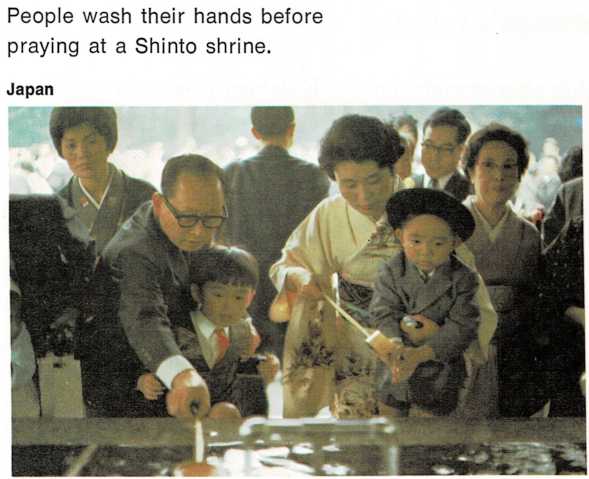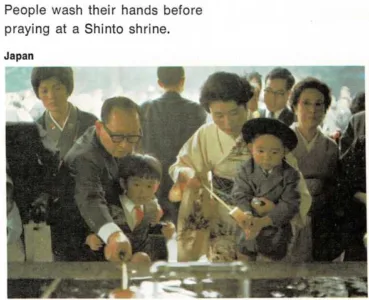
Fujiko’s religion
Fujiko’s feet go crunch-crunch as she walks along the gravel path with
her mother. The path winds through a grove filled with trees, rocks, and
ponds. It is like a big park, but it is really a place of worship. Many
of the people from the town in Japan where Fujiko lives come to this
grove to pray. To enter the grove, people go between two tall, upright
posts that have two other posts across the top. This is a kind of gate,
called a torii.
Fujiko looks at the trees and rocks as she walks
along. She knows there are gods and spirits in many of them. There are
gods and spirits in almost everything —trees, rocks, mountains,
fields, streams, rain, wind, fire, rice, corn, and other things. Many
ancestors are also gods.
At the end of the long gravel path is a small wooden building. This is a
holy place, called a shrine.
Fujiko and her mother stand before it. They clap their hands and bow
their heads in prayer.
Fujiko sees small shrines of this sort almost everywhere she goes. They
are beside roads, in fields, and in towns, as well as in parklike
groves. In Fujiko’s home there is also a shrine, one that looks like a
tiny cupboard. Each day Fujiko’s father puts a jar of water and a vase
filled with flowers or green leaves in front of the shrine to honor the
family god.
Fujiko is a Shintoist. Shinto is the native religion of Japan. The word
“Shinto” means “the Way of the Gods.”



